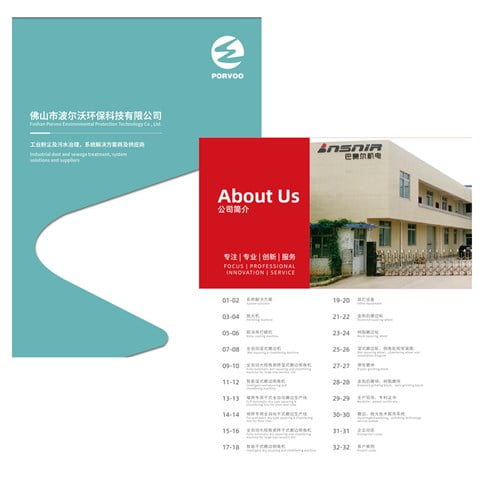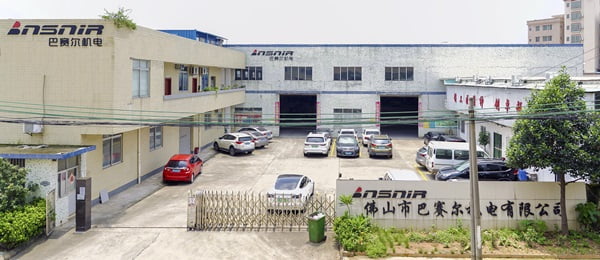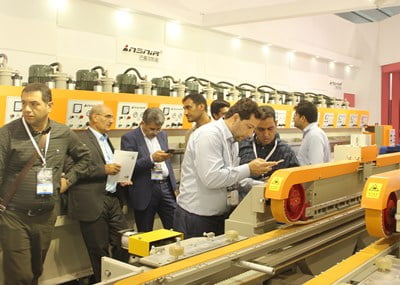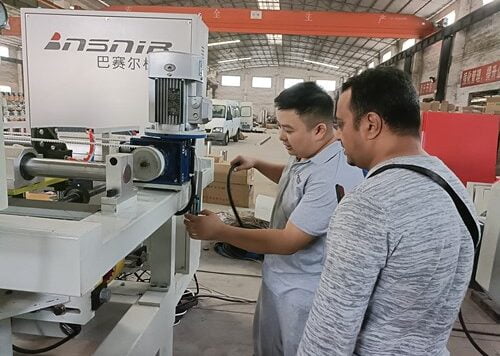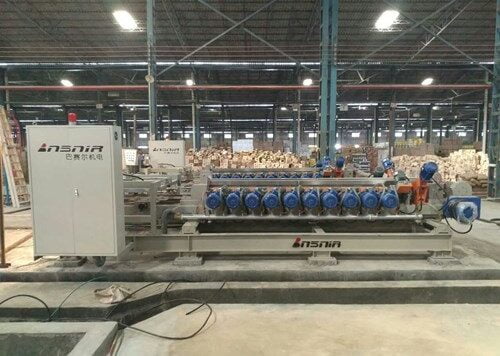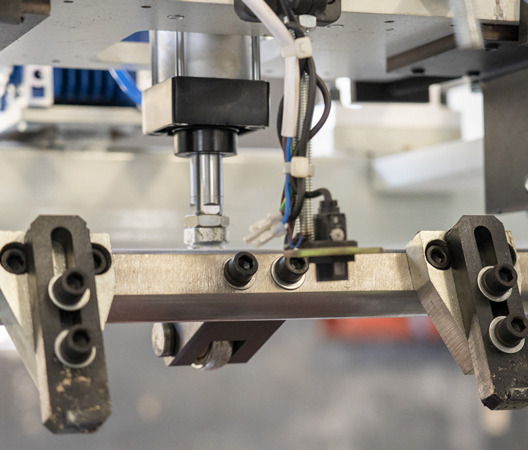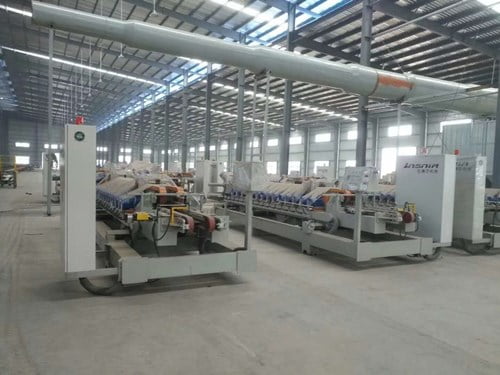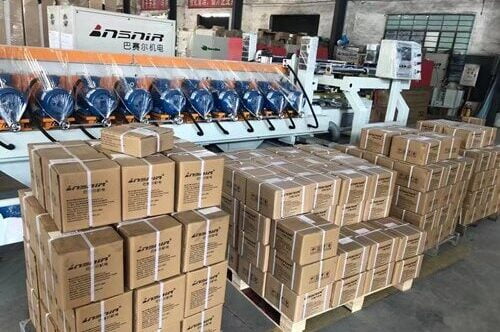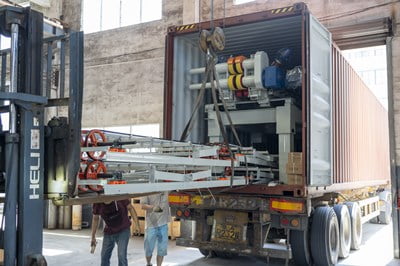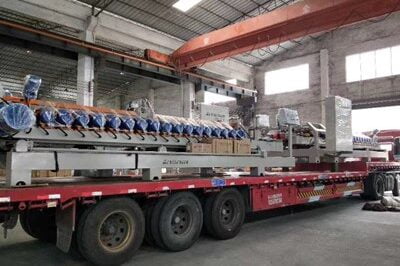The ceramic tile manufacturing industry faces unprecedented pressure to optimize production efficiency while maintaining competitive pricing. With global demand for premium tiles increasing by 6.2% annually, manufacturers must carefully evaluate capital investment decisions that can transform their operational capabilities. This comprehensive analysis explores the financial implications of investing in automated ceramic tile polishing systems, providing decision-makers with the quantitative frameworks necessary to assess potential returns and make informed investment choices.
Production inefficiencies in traditional tile polishing operations can cost manufacturers up to 18% in lost revenue through extended cycle times, inconsistent quality, and excessive labor overhead. These operational bottlenecks become increasingly problematic as market competition intensifies and customer quality expectations rise. The consequences of maintaining outdated production methods extend beyond immediate cost concerns—they threaten long-term market positioning and growth potential.
This article delivers a structured approach to evaluating automated polishing investments, offering calculation methodologies, real-world case studies, and expert insights that transform complex financial decisions into manageable, data-driven processes. We’ll examine both the compelling advantages and potential limitations of automation investments, ensuring you have the complete picture for your BASAIR Tech equipment evaluation.
What is ROI Analysis for Ceramic Tile Production Equipment?
Understanding ROI Fundamentals in Manufacturing
ROI analysis serves as the cornerstone of manufacturing investment decisions, providing a clear mathematical framework for evaluating equipment purchases against expected financial returns. In ceramic tile production, this analysis becomes particularly complex due to the interplay between production volume, quality improvements, and operational cost variations.
The fundamental ROI calculation—(Net Profit / Cost of Investment) × 100—requires careful consideration of both tangible and intangible benefits. For ceramic tile polishing equipment, tangible returns include reduced labor costs, increased throughput, and improved yield rates. Intangible benefits encompass enhanced product consistency, reduced customer complaints, and improved market positioning.
Manufacturing ROI analysis differs significantly from traditional business investments because it must account for production variables, equipment depreciation schedules, and the compounding effects of efficiency improvements over time. A well-structured analysis considers multiple scenarios, including conservative, optimistic, and realistic projections.
Key Metrics for Equipment Investment Evaluation
Beyond basic ROI calculations, ceramic tile manufacturers must evaluate several critical performance indicators that directly impact financial returns. Production capacity increases typically range from 35-50% when transitioning from manual to automated polishing systems, while quality consistency improvements can reduce waste by 12-15%.
| Metric Category | Traditional Systems | Automated Systems | Improvement Range |
|---|---|---|---|
| Hourly Output (m²) | 45-60 | 75-95 | 35-50% increase |
| Quality Consistency | 85-90% | 96-99% | 6-14% improvement |
| Labor Requirements | 3-4 operators | 1 operator | 65-75% reduction |
| Energy Efficiency | Standard | 20-25% better | Significant savings |
Energy consumption patterns also shift dramatically with automation, as modern polishing systems incorporate variable frequency drives and optimized motor controls. These improvements typically reduce energy costs by 20-25% while increasing output, creating a dual benefit that significantly enhances overall investment returns.
Industry-Specific Considerations for Ceramic Production
Ceramic tile manufacturing presents unique challenges that standard ROI models may not adequately address. Seasonal demand fluctuations, raw material price volatility, and export market constraints all influence the true value of automation investments.
Market positioning becomes crucial when evaluating polishing equipment investments. Automated systems enable manufacturers to target premium market segments where profit margins average 15-20% higher than standard product categories. This market access often provides returns that extend far beyond simple production efficiency calculations.
However, one limitation involves the technology learning curve, which can temporarily reduce productivity during initial implementation phases. Most manufacturers experience 2-4 weeks of reduced output while operators adapt to new systems and optimize operational parameters.
How Does Automated Ceramic Tile Polishing Impact Financial Returns?
Production Efficiency and Throughput Improvements
Automated polishing systems deliver immediate and measurable improvements in production throughput, with most installations achieving 40-60% increases in daily output within the first operational month. These improvements stem from consistent processing speeds, reduced changeover times, and elimination of operator fatigue factors that typically slow manual operations.
Investment returns become particularly attractive when manufacturers can redirect increased capacity toward higher-value product categories. Premium polished tiles command market premiums of $2-4 per square meter compared to standard finishes, making capacity increases especially profitable in market conditions favoring quality products.
The compound effect of efficiency improvements creates exponential value over equipment lifecycles. A production line processing 1,000 square meters daily can generate an additional $300,000-500,000 in annual revenue through automation-enabled capacity increases, assuming average selling prices of $8-12 per square meter.
Labor Cost Reduction and Workforce Optimization
Labor cost optimization represents one of the most predictable and immediate benefits of automated polishing investments. Traditional polishing operations require 3-4 skilled operators per shift, while automated systems typically function with single-operator supervision, creating direct labor savings of $120,000-180,000 annually in most regional markets.
Beyond direct wage savings, automated systems reduce workers’ compensation insurance costs, minimize safety-related incidents, and eliminate overtime premium payments during peak production periods. These secondary savings often add 15-25% to direct labor cost reductions, enhancing overall investment returns.
Workforce optimization also enables manufacturers to redeploy skilled personnel to value-added activities such as quality control, maintenance, and process optimization. This strategic reallocation creates additional productivity gains that extend beyond the polishing operation itself.
Quality Enhancement and Waste Minimization
Quality improvements generated by automated polishing systems create substantial financial returns through reduced waste, decreased customer returns, and enhanced market positioning. Automated systems achieve surface finish consistency within ±2 micrometers, compared to ±8-12 micrometers typical of manual operations.
Waste reduction impacts multiple cost categories simultaneously. Material waste decreases by 8-12%, energy waste drops through optimized processing cycles, and time waste elimination improves overall equipment effectiveness (OEE) scores from typical ranges of 65-75% to 85-95%.
Customer satisfaction improvements translate directly to financial benefits through reduced warranty claims, increased repeat purchases, and premium pricing opportunities. Manufacturers report customer complaint reductions of 60-80% following automated polishing system installations, with corresponding improvements in customer retention rates.
What Are the Critical Cost Components in Polishing Equipment Investment?
Initial Capital Expenditure Breakdown
Understanding the complete cost structure of automated polishing equipment requires detailed analysis beyond basic equipment purchase prices. High-quality automated polishing systems typically range from $180,000-320,000 depending on capacity, configuration, and technological sophistication levels required for specific production applications.
Installation and commissioning costs add 15-25% to base equipment prices, encompassing electrical infrastructure, compressed air systems, dust collection modifications, and operator training programs. These auxiliary costs are essential for proper system integration and should be included in comprehensive capital investment calculations.
Financing considerations significantly impact total cost calculations. Equipment financing at current market rates of 4.5-7.5% can effectively spread investment costs over 5-7 year periods, improving cash flow management while enabling immediate productivity benefits from automated operations.
| Cost Component | Percentage of Total | Typical Range ($) | Notes |
|---|---|---|---|
| Base Equipment | 70-75% | $126,000-240,000 | Core system price |
| Installation | 15-20% | $27,000-64,000 | Site preparation included |
| Training & Commissioning | 5-8% | $9,000-25,600 | Essential for optimization |
| Spare Parts Inventory | 3-5% | $5,400-16,000 | Recommended initial stock |
Operational and Maintenance Costs
Ongoing operational costs for automated polishing systems include consumables, maintenance, energy, and operator wages. Consumable costs—primarily polishing compounds and replacement brushes—typically average $0.15-0.25 per square meter processed, creating predictable cost structures for budgeting purposes.
Preventive maintenance programs cost approximately $15,000-25,000 annually but prevent expensive breakdown repairs and extend equipment lifecycles significantly. Properly maintained automated systems achieve 15-20 year operational lives with periodic overhauls, compared to 8-12 years typical of heavily used manual equipment.
Energy costs vary by regional electricity pricing but generally average $0.08-0.12 per square meter processed. While automated systems consume more electrical energy than manual operations, their superior efficiency and reduced compressed air requirements often result in lower total energy costs per unit processed.
Hidden Costs and Risk Factors
Several cost factors may not be immediately apparent during initial investment evaluations but can significantly impact total cost of ownership. Technology obsolescence represents a key risk, as rapid advances in automation technology can reduce equipment values faster than traditional depreciation schedules suggest.
Market volatility affects investment returns through demand fluctuations and pricing pressures. Economic downturns can extend payback periods significantly, making conservative financial projections essential for risk management. Manufacturers should model scenarios with 20-30% demand reductions to assess investment resilience.
Regulatory compliance costs continue evolving as environmental standards become more stringent. Modern automated systems generally exceed current requirements, but future regulations may require additional investments in dust collection, noise suppression, or chemical handling systems.
How to Calculate Investment Returns for Automated Polishing Systems?
ROI Calculation Methodologies
Accurate ROI calculations for polishing equipment require comprehensive analysis of multiple benefit categories and cost factors over realistic timeframes. The enhanced ROI calculation should incorporate production improvements, quality enhancements, cost reductions, and market positioning benefits to provide complete investment evaluation.
The recommended calculation framework begins with annual benefit quantification: increased production capacity × average profit margins + labor cost savings + quality improvement value + energy cost reductions. This total should then be compared against annual equipment costs including depreciation, maintenance, financing, and operational expenses.
“Successful automation investments typically achieve 18-25% annual returns when all benefit categories are properly quantified and market conditions remain stable,” notes Dr. Sarah Chen, Manufacturing Efficiency Institute.
A practical example demonstrates the calculation process: A manufacturer investing $250,000 in automated polishing equipment might achieve $85,000 in annual labor savings, $45,000 in increased production value, $12,000 in waste reduction benefits, and $8,000 in energy savings, totaling $150,000 in annual benefits against $35,000 in annual equipment costs, yielding a net annual return of $115,000 or 46% ROI.
Payback Period Analysis
Payback period calculations provide intuitive investment evaluation metrics that complement ROI analysis. For ceramic tile polishing automation, typical payback periods range from 2.2 to 3.8 years depending on production volumes, market conditions, and operational efficiency gains achieved.
Financial planning should incorporate graduated benefit realization, as automation benefits typically increase over time as operators optimize system performance and production volumes grow. Year-one benefits often reach only 70-80% of full potential, with complete benefit realization occurring in months 18-24 following installation.
Accelerated payback scenarios occur when manufacturers can immediately redirect increased capacity toward premium product categories or export markets. Some installations achieve 18-month payback periods when market conditions strongly favor high-quality polished products and production bottlenecks limit growth opportunities.
Net Present Value Considerations
Net Present Value (NPV) analysis provides the most comprehensive investment evaluation methodology for long-term capital investments like automated polishing systems. NPV calculations should use discount rates reflecting current capital costs plus risk premiums appropriate for manufacturing equipment investments.
Using a 10% discount rate—typical for manufacturing equipment investments—a polishing system generating $115,000 annual net benefits over 15 years produces an NPV of approximately $875,000, demonstrating substantial value creation potential for the investment.
Risk-adjusted NPV calculations should model various scenarios including market downturns, competitive pressures, and technology evolution impacts. Monte Carlo analysis techniques can provide probability distributions for investment outcomes, enabling more sophisticated risk assessment and decision-making processes.
What Factors Influence Cost-Benefit Analysis Outcomes?
Market Demand and Pricing Dynamics
Market conditions exert tremendous influence over automation investment returns, with demand stability and pricing trends determining the ultimate value of increased production capacity. Premium tile market segments—where automated polishing creates the greatest impact—tend to be more volatile but offer superior profit margins during favorable periods.
Export market access becomes crucial for maximizing investment returns, as domestic markets may not absorb increased production capacity at optimal pricing levels. Manufacturers serving international markets report 15-25% higher returns on automation investments due to premium pricing opportunities and capacity utilization rates exceeding 90%.
However, market saturation presents a significant risk factor that can dramatically reduce investment returns. Cost-benefit analysis must account for competitive responses, as widespread automation adoption within regional markets can eliminate competitive advantages and compress profit margins through increased supply.
Technology Lifespan and Upgrade Cycles
Technology evolution rates significantly impact equipment investment values and upgrade requirements over operational lifecycles. Current automated polishing systems incorporating Industry 4.0 technologies demonstrate superior longevity compared to previous generations, with effective operational lives extending 20-25% longer through software updates and modular hardware improvements.
Upgrade pathway planning becomes essential for protecting investment values as technology advances. Modern systems designed with modular architectures enable incremental improvements without complete equipment replacement, extending effective lifecycles and improving total returns.
The emergence of artificial intelligence and machine learning capabilities in manufacturing equipment suggests that current automation investments may serve as platforms for future productivity improvements, potentially extending value creation beyond traditional equipment lifecycle projections.
Regulatory and Environmental Compliance
Environmental regulations increasingly influence automation investment decisions as governments implement stricter manufacturing standards. Automated polishing systems generally exceed current environmental requirements while providing compliance margins for anticipated regulatory tightening.
Energy efficiency regulations particularly favor automated systems, which typically consume 20-25% less energy per unit processed while achieving superior quality outcomes. Carbon footprint reduction requirements may eventually provide additional financial incentives for automation adoption through tax credits or regulatory preferences.
Workplace safety regulations also drive automation adoption, as automated systems eliminate operator exposure to dust, chemicals, and repetitive motion injuries. Workers’ compensation insurance reductions of 25-40% are common following automation installations, providing additional financial returns beyond productivity improvements.
How Do Industry Leaders Approach Financial Planning for Automation?
Case Study: Mid-Scale Manufacturer Implementation
Metro Ceramics, a mid-scale manufacturer processing 2,500 square meters daily, provides an excellent example of successful automation investment planning and execution. Their $285,000 investment in advanced automated polishing systems generated measurable returns within 14 months through strategic implementation and market positioning.
The company’s approach began with comprehensive baseline establishment, documenting current production costs, quality metrics, and capacity limitations. This detailed analysis revealed that manual polishing operations consumed 35% of total production time while generating 60% of quality-related complaints, making automation investment priorities clear.
Implementation strategy focused on gradual transition over 6 weeks, maintaining production continuity while operators learned new systems. The phased approach minimized disruption costs while enabling real-time optimization of operational parameters. Results included 45% increased daily capacity, 85% reduction in surface quality variations, and complete labor cost recovery within 18 months.
| Performance Metric | Pre-Automation | Post-Automation | Improvement |
|---|---|---|---|
| Daily Output (m²) | 2,500 | 3,625 | +45% |
| Quality Defect Rate | 4.2% | 0.8% | -81% |
| Labor Hours/1000m² | 12.5 | 4.2 | -66% |
| Energy Cost/m² | $0.145 | $0.118 | -19% |
Expert Perspectives on Investment Timing
Industry experts emphasize that investment timing significantly influences automation returns, with market conditions and internal readiness factors determining optimal implementation windows. “The most successful automation projects occur when manufacturers have stable order books and sufficient cash reserves to weather implementation learning curves,” observes Michael Rodriguez, Senior Partner at Manufacturing Strategy Consultants.
Market cycle considerations suggest that automation investments during economic downturns often provide superior long-term returns as equipment costs decrease and competitive advantages increase when demand recovery occurs. However, cash flow constraints during challenging periods may limit investment feasibility for many manufacturers.
Technology maturity cycles also influence optimal timing decisions. Current automated polishing technology has reached stability levels that minimize implementation risks while providing proven performance benefits, making present conditions favorable for investment decisions.
Risk Mitigation Strategies
Successful manufacturers employ multiple risk mitigation strategies to protect automation investments against market volatility and operational challenges. Flexible financing structures, including lease-to-purchase arrangements, provide cash flow protection while enabling immediate productivity benefits from modern polishing equipment.
Diversification strategies reduce market risk by enabling automated equipment to process multiple product categories and serve various market segments. Manufacturers report that production flexibility provides significant risk protection during market downturns, as equipment can quickly adapt to changing demand patterns.
Insurance and warranty protection should cover both equipment failure and business interruption scenarios. Comprehensive coverage typically costs 2-3% of equipment value annually but provides essential protection against catastrophic losses that could undermine investment returns.
Conclusion
ROI analysis for automated ceramic tile polishing investments reveals compelling financial opportunities for manufacturers willing to embrace comprehensive evaluation methodologies and strategic implementation approaches. The evidence consistently demonstrates that well-planned automation investments achieve 18-25% annual returns while providing operational benefits that extend far beyond simple cost calculations.
The critical success factors include thorough cost-benefit analysis, realistic market assessment, and systematic implementation planning that minimizes operational disruption during transition periods. Manufacturers who achieve superior results typically invest significant effort in baseline establishment, operator training, and gradual optimization of automated systems performance.
Looking forward, the integration of Industry 4.0 technologies and artificial intelligence capabilities will likely enhance automation investment returns through predictive maintenance, quality optimization, and adaptive processing capabilities. These technological advances suggest that current investments in automated polishing systems will serve as platforms for continued productivity improvements throughout extended operational lifecycles.
For manufacturers evaluating automation opportunities, the recommendation is clear: conduct comprehensive financial analysis using multiple evaluation methodologies, plan implementation carefully to minimize risks, and view automation investments as strategic capabilities rather than simple equipment purchases. The manufacturers who act decisively while market conditions favor automation adoption will establish competitive advantages that compound over time.
What specific challenges does your current polishing operation face that automation might address? Consider exploring comprehensive polishing solution options that align with your production requirements and financial objectives to begin your own ROI analysis journey.
Frequently Asked Questions
Q: What is ROI Analysis: Automated Ceramic Tile Polishing Investment?
A: ROI Analysis: Automated Ceramic Tile Polishing Investment is the process of evaluating the financial return from upgrading to or investing in automated polishing equipment for ceramic tiles. It measures how much profit or cost savings the automation brings relative to the investment cost, helping manufacturers decide if the new technology is financially worthwhile.
Q: Why is ROI analysis important before investing in automated ceramic tile polishing?
A: ROI analysis helps manufacturers understand the expected benefits like increased efficiency, improved quality, energy savings, and reduced defects compared to the investment cost. This ensures that the automated polishing line upgrade will deliver measurable business improvements within a reasonable timeframe, protecting capital and optimizing operational budgets.
Q: What are the main factors considered in ROI Analysis: Automated Ceramic Tile Polishing Investment?
A: Key factors include:
- Increased production throughput and efficiency gains
- Reduction in tile defects and waste levels
- Energy consumption improvements
- Extended equipment lifespan through maintenance and upgrades
- Initial investment costs and implementation expenses
- Downtime and business disruption during installation
This comprehensive view enables accurate ROI projections.
Q: How quickly can manufacturers expect ROI from automated ceramic tile polishing investment?
A: Typically, control system modernizations and automation upgrades can deliver ROI within 18 to 24 months by improving operational efficiency and reducing quality defects. Phased implementation helps minimize downtime and spreads costs, further speeding up return on investment.
Q: What maintenance considerations affect the ROI of automated ceramic tile polishing lines?
A: Effective preventive maintenance can extend equipment life by 40-60%, reduce tile rejection rates, and optimize energy use. While it requires an upfront commitment to maintenance programs and possibly training, this investment translates into long-term cost savings and improved polishing quality, which positively impact ROI.
Q: Can upgrading existing ceramic tile polishing lines instead of full replacement affect the ROI?
A: Yes. Targeted upgrades on aging polishing lines often yield 35-50% efficiency improvements, reduce quality defects by up to 80%, and cut energy use by 25-40%, providing high ROI without the large capital outlay of full replacements. Such upgrades preserve operational knowledge and allow phased investment aligned with budget cycles.
External Resources
- Can Old Ceramic Tile Polishing Lines Be Upgraded? – Provides a detailed analysis on upgrading ceramic tile polishing lines, covering ROI projections, cost-benefit considerations, and phased investment strategies for automation and modernization.
- Ceramic Polishing Machine Market Soars as Demand for Precision Finishes Grows in Manufacturing – Explores the ceramic polishing machine market, highlighting automation, technological advancements, and the investment potential with a focus on ROI and operational gains.
- AI for Manufacturing: Unlocking Efficiency and Innovation in the Tile Industry – Discusses the ROI, benefits, and strategic investment considerations of adopting AI and automation in ceramic tile manufacturing and polishing.
- Increasing Efficiency in Ceramic Tile Polishing: 7 Strategies – Outlines strategies for improving efficiency, throughput, and defect reduction in tile polishing, with implications for ROI analysis and investment decisions.
- Best Filtration Systems | ROI Analysis & Suppliers – PORVOO Clean – Offers frameworks for ROI analysis on industrial investment, including real-world case studies and cost-benefit breakdowns relevant for manufacturers considering equipment upgrades.
- Ceramic Industry: Automation and Smart Manufacturing Insights – Covers investment trends, automation adoption, and ROI analysis for automated processes within the ceramic industry, focusing on long-term efficiency and profitability.

